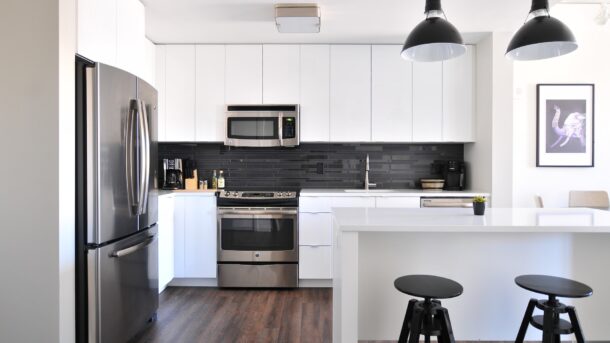Choosing cabinets for your home involves more than just picking something off the shelf. It’s about finding a solution that fits your space, lifestyle, and budget. Two popular options that offer flexibility and customization are custom cabinets and semi-custom cabinets. Each comes with its own set of advantages and considerations. In this guide, we’ll delve into the differences between custom cabinets and semi-custom cabinets to help you make an informed decision for your next project.
Understanding Custom Cabinets
Custom cabinets NJ are built entirely to order based on your specifications. These are crafted by skilled artisans or carpenters who tailor every aspect to fit your space perfectly. Here’s what you need to know:
- Tailored to Your Space: Custom cabinets are ideal for unique spaces or rooms with unconventional layouts. Whether you have angled walls, uneven floors, or specific height requirements, custom cabinets NJ can be designed to fit seamlessly.
- Unlimited Design Options: With custom cabinets, the design possibilities are virtually endless. You can choose the materials, finishes, hardware, and organizational features precisely to your liking. This level of customization allows you to achieve a truly personalized look that complements your home’s aesthetic.
- Quality Craftsmanship: Typically, custom cabinets NJ are crafted using high-quality materials and construction techniques. This ensures durability and longevity, making them a worthwhile investment for your home.
- Higher Cost: One significant consideration with custom cabinets is the cost. Since each piece is made to order with premium materials and craftsmanship, they tend to be more expensive than pre-made or semi-custom options. However, the durability and customization may justify the higher price tag for many homeowners.
- Longer Lead Times: Because custom cabinets are made from scratch, they generally have longer lead times compared to off-the-shelf or semi-custom options. It’s essential to plan your project timeline accordingly if you opt for custom cabinets NJ.
Exploring Semi-Custom Cabinets
Semi-custom cabinets NJ offer a balance between customization and affordability. These cabinets are pre-manufactured to some extent but allow for personalized touches:
- Flexible Design Options: Semi-custom cabinets come in standard sizes and configurations but offer a range of customizable features. You can typically choose from various finishes, hardware options, and sometimes even modify certain dimensions to better suit your space.
- Cost-Effective Customization: Compared to fully custom cabinets, semi-custom options are generally more budget-friendly while still offering a degree of personalization. This makes them a popular choice for homeowners looking to upgrade their cabinets without breaking the bank.
- Quicker Turnaround: Since semi-custom cabinets are partially pre-built, they often have shorter lead times than custom cabinets NJ. This can be advantageous if you’re working on a tight schedule or renovation timeline.
- Standardized Construction: While semi-custom cabinets offer some customization, they are still limited by pre-set styles and sizes. This may not be ideal for spaces that require highly specific dimensions or unique design elements.
- Varied Quality: Quality can vary widely among semi-custom cabinet manufacturers. It’s crucial to research brands and read reviews to ensure you’re selecting cabinets that meet your quality expectations and durability needs.
Choosing Between Custom and Semi-Custom Cabinets
Making the decision between custom cabinets NJ and semi-custom cabinets depends on several factors:
- Budget: Consider your budget and how much you’re willing to invest in your cabinetry. Custom cabinets offer unparalleled customization but come with a higher price tag, while semi-custom cabinets provide a balance of customization and affordability.
- Space Requirements: Evaluate your space’s layout and dimensions. Custom cabinets NJ are ideal for irregular or challenging spaces, whereas semi-custom cabinets work well in standard-sized kitchens and bathrooms.
- Design Preferences: Think about your design preferences and the specific aesthetic you want to achieve. Custom cabinets allow you to create a one-of-a-kind look tailored to your style, while semi-custom options offer flexibility within pre-defined styles.
- Timeline: Consider your project timeline. If you need cabinets quickly, semi-custom options with shorter lead times may be more suitable than waiting for custom cabinets NJ to be built.
- Quality and Durability: Assess the quality and craftsmanship of both custom and semi-custom cabinets. Custom cabinets often boast superior materials and construction, but high-quality semi-custom options can also provide durability and functionality.
Conclusion
Choosing between custom cabinets and semi-custom cabinets ultimately comes down to your specific needs, preferences, and budget. Custom cabinets offer unmatched personalization and quality but at a higher cost and longer lead time. On the other hand, semi-custom cabinets provide a balance of customization and affordability, making them a practical choice for many homeowners. Whether you prioritize design flexibility, budget constraints, or project timeline, understanding the differences between custom and semi-custom cabinets will help you make an informed decision that enhances both the functionality and aesthetic appeal of your home.
By carefully weighing these factors and consulting with cabinet professionals, you can confidently select the cabinets that best suit your home and lifestyle.

